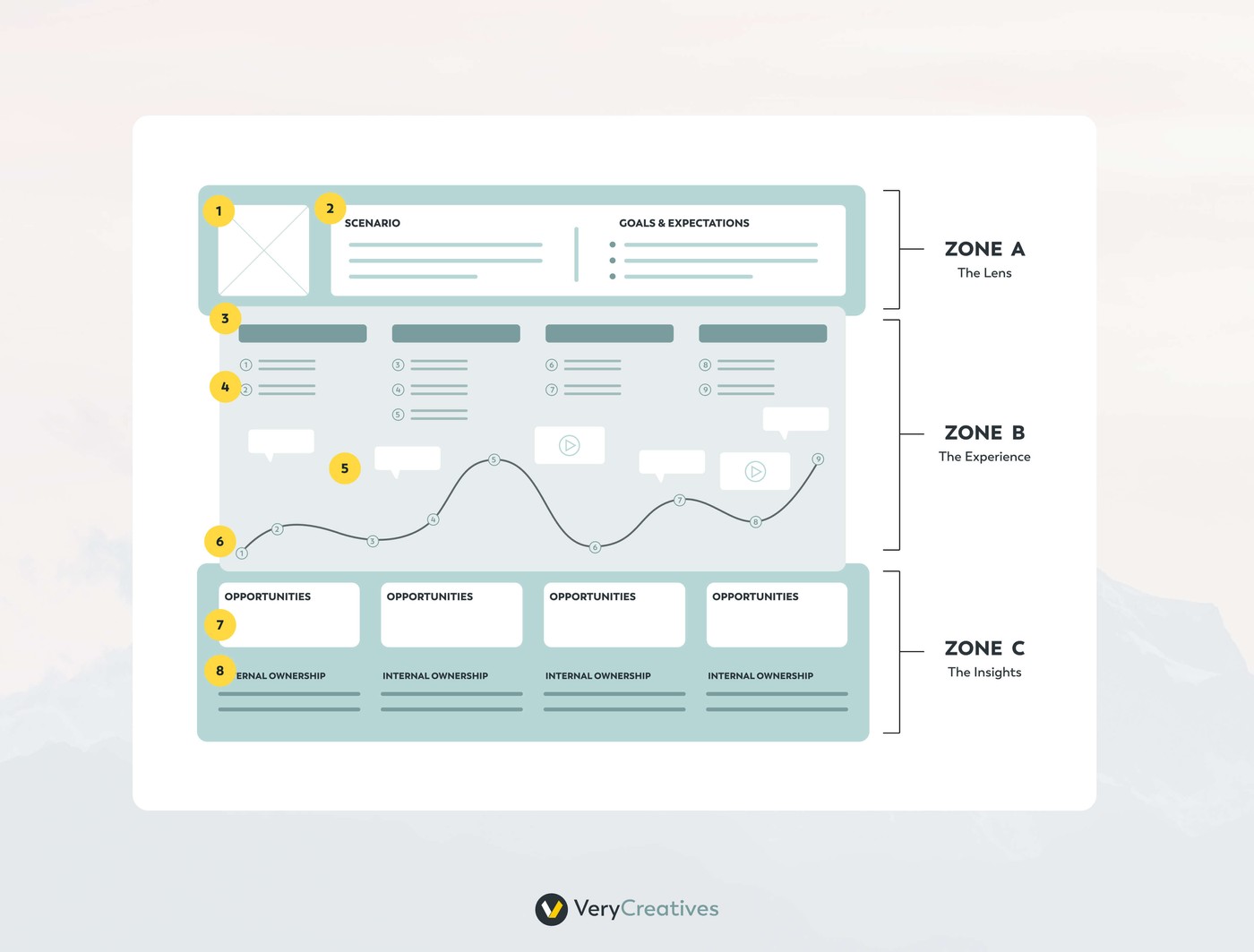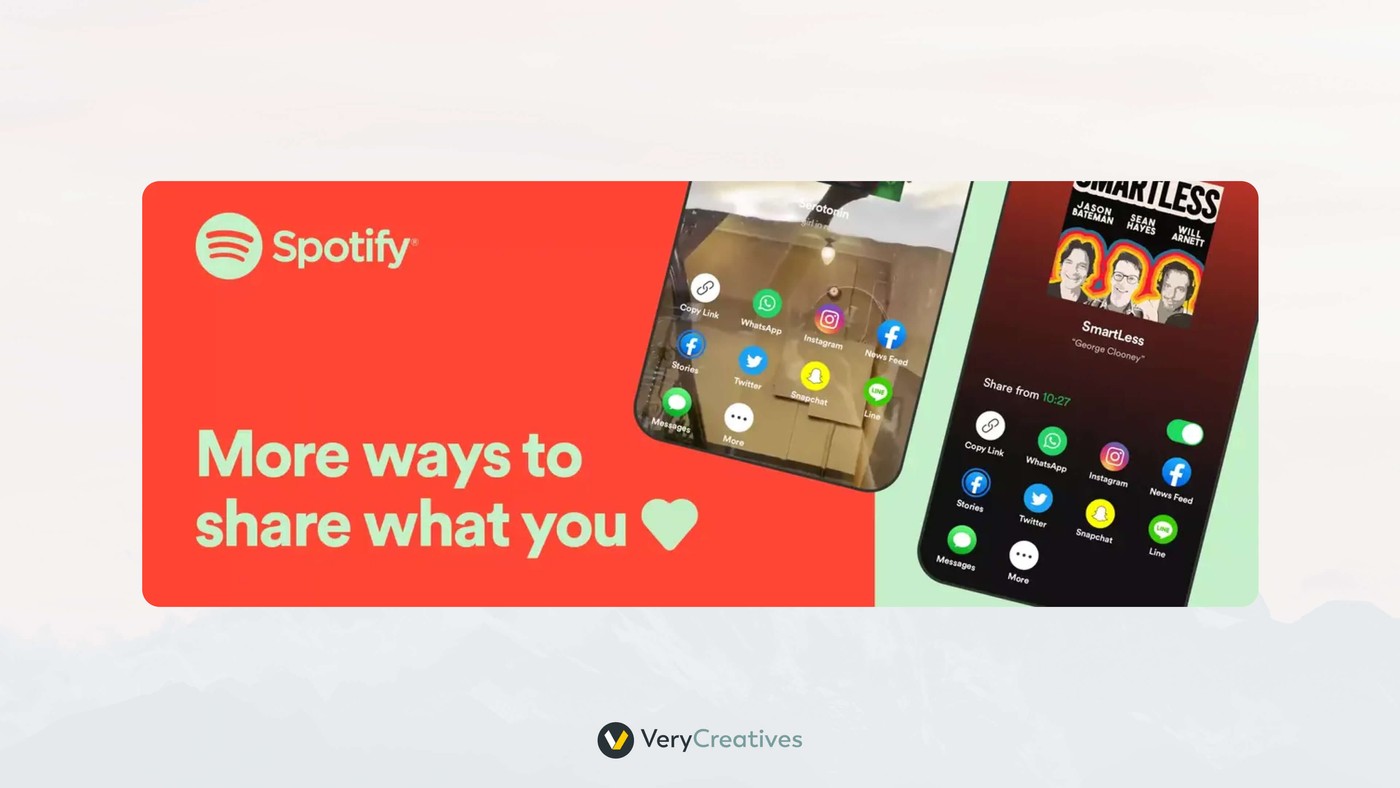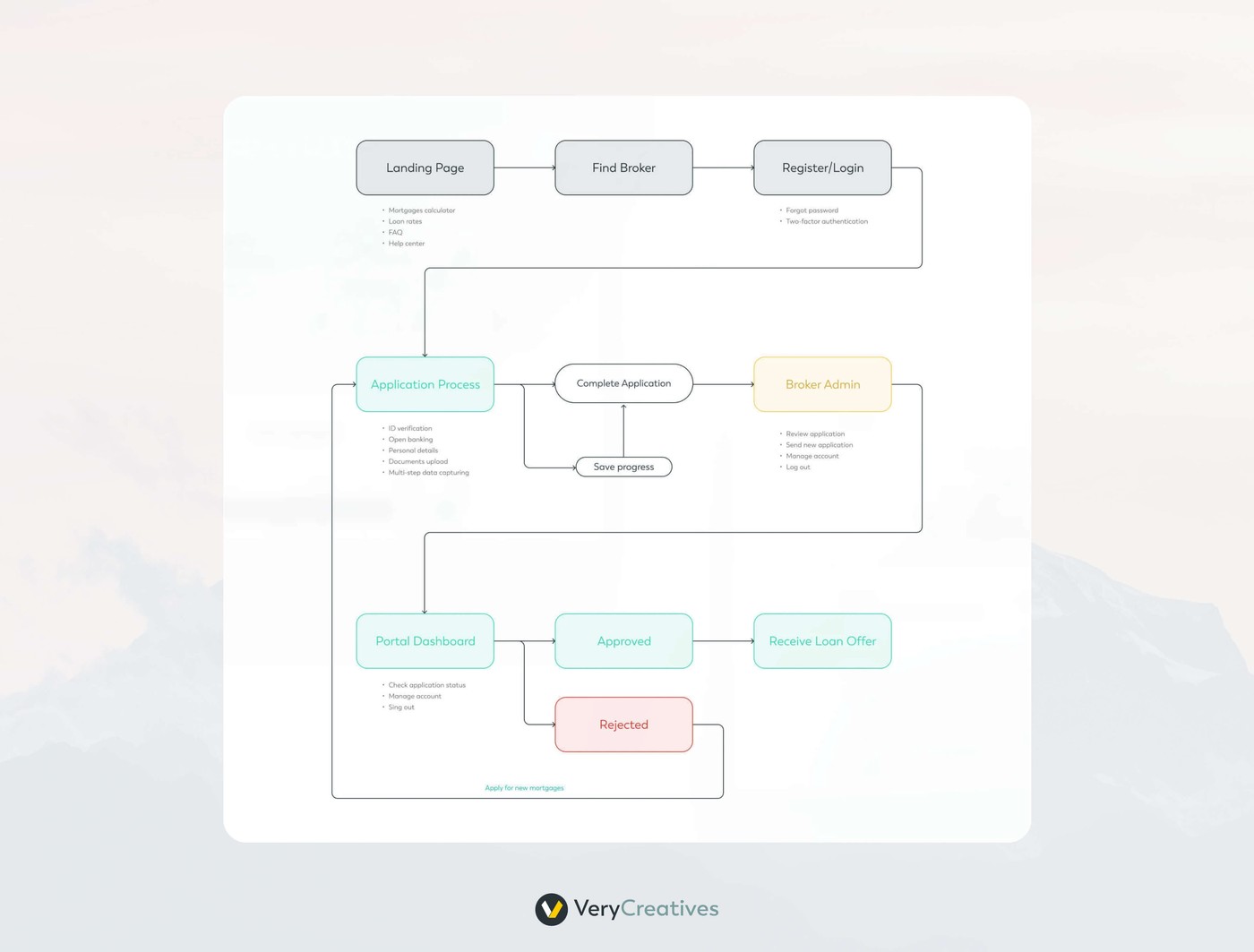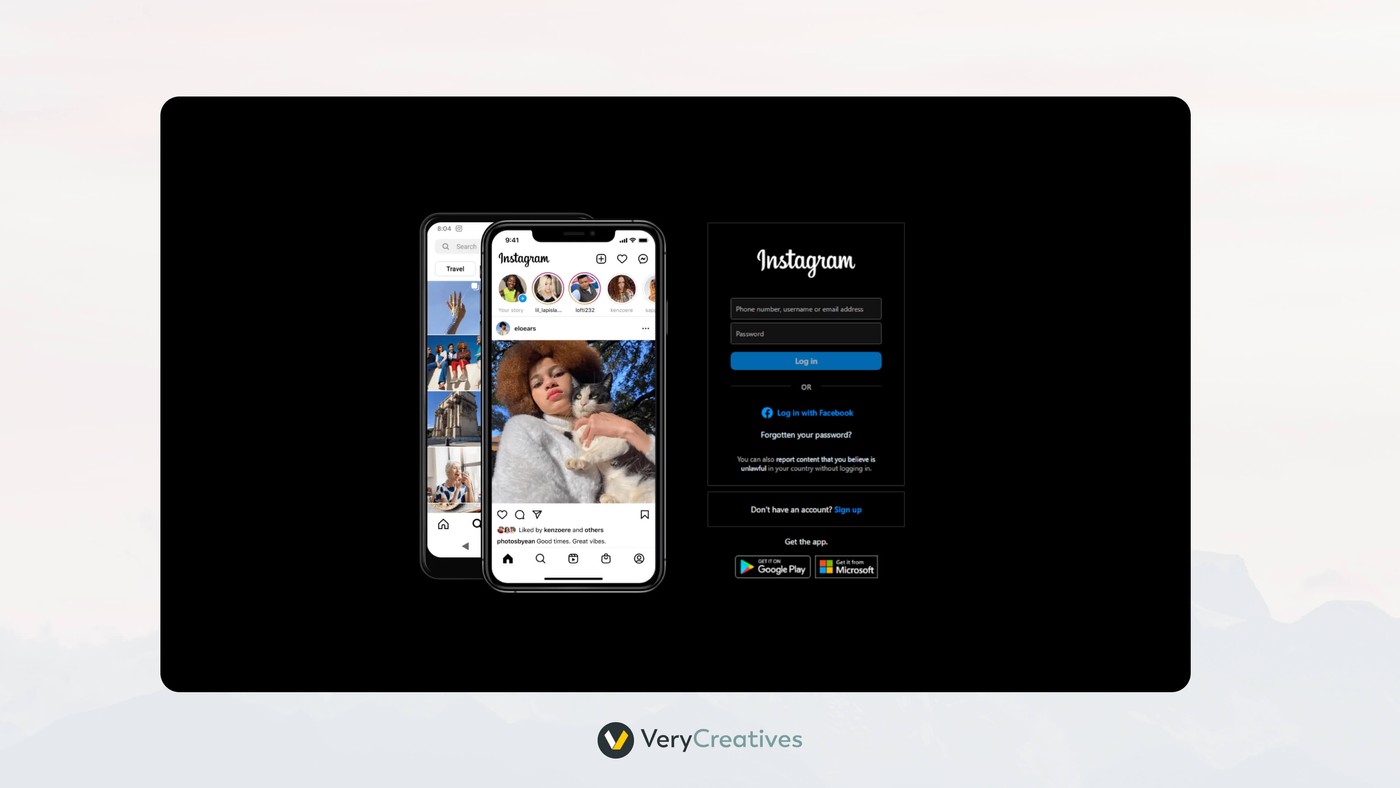When creating SaaS products, teams often use the terms “user journey” and “user flow” interchangeably.
This common misconception can lead to significant design problems: features that look perfect on paper but frustrate users in practice, onboarding sequences that fail to convert, and products that miss their core user needs.
Understanding the distinct role of each tool - and knowing exactly when to use which - can make the difference between a product that delights users and one that sends them looking for alternatives.
Here’s what makes them different:
The fundamental difference
Think of it this way: a user journey is like planning a vacation, while a user flow is like following GPS directions to a specific destination. One captures the entire experience - from dreaming about the trip to sharing photos afterward - while the other focuses on the exact turns needed to reach your hotel.
User journey: the complete experience map
A user journey captures the full story of how someone interacts with your product over time.
While user flows focus on specific actions, user journeys dig deeper into the user’s thoughts, feelings, and broader context.
They track how users move between different channels, from email to app to customer service, and examine their experience across hours, days, or even months.
Consider how a well-designed user journey might unfold for a project management tool: A potential user first hears about the tool through a colleague’s frustrated complaints about their current system.
They spend several days researching alternatives, comparing features and prices. During a particularly chaotic workday, they finally sign up for a trial.
Over the next few weeks, they gradually discover and adopt more features, eventually becoming so convinced of the tool’s value that they champion it to their entire team.
This comprehensive view reveals crucial insights that a simple user flow could never capture: the emotional triggers that drive adoption, the time users need to fully embrace the product, and the social factors that influence their decisions.

The anatomy of an effective user journey
A well-crafted user journey map reveals layers of insight that might otherwise remain hidden.
At its core, it tells a story through several key dimensions that work together to create a complete picture of the user experience.
The journey begins with understanding the user persona - not just demographic details, but their deeper motivations, fears, and aspirations.
A startup founder looking for project management software brings very different needs and expectations than a corporate team leader implementing the same tool.
As users move through different stages of interaction with your product, their emotions and mindset shift dramatically.
A first-time user might feel overwhelmed or skeptical during onboarding, then experience moments of delight as they master basic features, followed by frustration when encountering more complex functionality.
These emotional highs and lows occur across various touchpoints - from marketing emails to in-app experiences to customer support interactions.
The real power of a user journey map lies in identifying pain points and opportunities.
You might discover that users consistently struggle with feature discovery after their initial onboarding, or that they feel uncertain about inviting team members because they can’t predict pricing changes.
These insights, backed by concrete metrics like conversion rates and engagement patterns, point to specific opportunities for improvement.
What makes user journeys particularly valuable is their ability to surface unexpected connections.
You might find that a minor friction point early in the journey has major implications for long-term user retention, or that positive experiences in one area create a halo effect that influences how users perceive other features.
User journeys in action: Spotify’s social sharing evolution
Spotify’s journey with social sharing features offers a compelling case study in the power of user journey mapping.

In 2021, Spotify undertook a major initiative to integrate sharing into the user experience more effectively, recognizing that music sharing is fundamentally a social experience that extends beyond just technical features.
The initial challenge
Spotify’s data showed a clear disconnect: while their platform hosted millions of shareable moments every day (discovering new songs, creating playlists, following artists), actual sharing activity was surprisingly low.
The question was why.
The journey mapping process
Instead of focusing solely on the sharing interface, Spotify mapped out complete user journeys around music discovery and sharing.
- Discovery Context: Users often found music they wanted to share while doing other activities - working out, commuting, or working. The act of sharing needed to fit naturally into these contexts without disrupting the primary activity.
- Social Dynamics: Music taste is deeply personal. Users reported feeling vulnerable about sharing their music preferences, fearing judgment from their social circles. This emotional barrier was particularly strong for certain genres and in public sharing scenarios.
- Sharing Friction: Even when users wanted to share, the process often required too many steps, breaking their listening flow.
The solution
Based on these journey insights, Spotify implemented several key changes:
- Context-Aware Sharing: They integrated sharing options more naturally into the listening experience, making them accessible but not intrusive.
- Private Sharing Options: They emphasized direct, private sharing channels, allowing users to share music with specific friends rather than broadcasting to their entire network.
Why user journeys matter more than you think
User journeys reveal the critical difference between what users do and why they do it.
When a user stops using your product after three week, a user flow analysis might show they last visited the dashboard, attempted to create a new project, then left.
This tells you where they abandoned the product, but leaves the most important questions unanswered.
A user journey map, however, uncovers the full story:
- Perhaps they spent those three weeks gradually testing features during their team’s monthly planning meetings.
- Maybe they loved the product but couldn’t justify the price to their manager.
- Possibly they were enthusiastic at first but grew frustrated by the lack of integration with tools their colleagues use daily.
These insights matter because they change how you solve problems:
- If users only engage during team meetings, maybe you need better collaborative features, not a redesigned dashboard
- If price justification is the barrier, perhaps you need better ROI tracking tools, not a simplified pricing page
- If integration concerns drive abandonment, the solution might be building better partnerships, not improving your core features
Journey mapping also reveals unexpected opportunities.
A user who appears to be “struggling” with advanced features might actually be deeply engaged, investing time to master your product.
Without understanding their journey, you might mistakenly simplify these features when you should be supporting their learning process with better documentation or tutorials.
Most importantly, user journeys help you recognize that product success often depends on factors outside your interface.
A perfectly designed feature might fail because it doesn’t fit into users’ existing workflows.
A seemingly minor integration could become your most valuable feature because it solves a crucial pain point in users’ broader work lives.
Applying user journeys in SaaS products
The value of user journey mapping becomes particularly clear in SaaS products, where user relationships unfold over months or years.
Take a typical SaaS onboarding experience: what looks like a simple series of setup screens in a user flow becomes a complex emotional journey when mapped properly.
A new user signing up for a project management tool isn’t just following steps - they’re likely switching from another system, bringing their team’s established workflows, and betting their professional reputation on this choice.
Their journey might start with reading reviews three months before purchase, include a careful trial period where they test critical features, and continue through training their team and defending their choice to stakeholders.
Understanding these extended journeys reveals crucial insights that a simple user flow would miss.
A user who appears to “drop off” during onboarding might actually be following a perfectly rational pattern of testing the product in stages, consulting with team members, and comparing alternatives.
Without this broader journey perspective, product teams might mistakenly try to “fix” behavior that actually indicates a healthy adoption process.
Journey mapping also helps product teams identify and address critical moments that traditional analytics might miss.
A user who seems highly engaged with your product might be frantically searching for specific features they need to justify their purchase to their manager.
High support ticket volumes might not indicate product confusion, but rather users deeply investing in learning advanced features.
Understanding user flows: the technical journey
While user journeys tell the complete story, user flows zoom in on the specific chapters where users interact directly with your product.
Think of user flows as the precise choreography of clicks, swipes, and inputs that users perform to accomplish their goals.
When a user wants to create a new project in a task management tool, their user flow might include:
- Clicking the “New Project” button
- Entering the project name
- Selecting team members
- Setting due dates
- Adding initial tasks
This sequence matters immensely. Add too many steps, and users abandon the process.
Put steps in an illogical order, and users get confused.
Hide critical options in unintuitive places, and users miss important features entirely.
What makes user flows particularly powerful is their ability to reveal technical friction that might be masked in broader journey maps.
A user might be highly motivated to use your product (as revealed in the journey map), but still give up because a critical button is hidden below the scroll line (as revealed in the user flow).

The three dimensions of flow design
When designing digital products, teams often work with three distinct types of flows, each serving a unique purpose in creating seamless user experiences.
Task flows represent the most focused view, capturing the essential steps for completing a single action.
Imagine setting up a recurring payment in a banking app: the task flow strips away everything except the critical steps - selecting the recipient, entering the amount, choosing the frequency, and confirming the setup.
This laser focus helps designers optimize the most common user tasks for maximum efficiency.
User flows take a broader view, mapping out how users might move through multiple tasks or features.
In a project management tool, a user flow might show how someone moves from creating a project to inviting team members, setting up task lists, and configuring notifications.
These flows reveal how different features connect and where users might get lost between tasks.
Wire flows add visual context to these pathways, showing not just what users do, but what they see at each step.
They combine the logical progression of flowcharts with the visual elements of wireframes.
A wire flow for a social media app would show both the sequence of actions for posting content and the actual screens users encounter, including how elements like buttons, forms, and confirmation messages appear and transform throughout the process.
Each type of flow serves as a different lens for examining user interaction. Task flows help perfect individual features.
User flows ensure these features work together coherently. Wire flows verify that the visual design supports and enhances the underlying interaction patterns.
The anatomy of effective user flows
Creating successful user flows requires understanding their essential components and how these elements work together to guide users through your product.
The first component is the point of entry - not just homepages and landing pages, but deep links from marketing emails, social media posts, and system notifications.
Different starting points create unique contexts and expectations that must be carefully managed throughout the user’s journey.
Navigation through a product presents users with critical decision moments where they must choose between different paths.
While selecting between pricing plans or feature options might seem straightforward to designers, such choices can become significant obstacles for users without proper context or confidence.
Strong flows anticipate uncertainty and provide clear guidance at every crossroads.
A continuous dialogue between user and interface emerges through actions and feedback.
Clicking buttons, filling forms, and other interactions should trigger clear responses that maintain momentum and control.
Beyond simple confirmation messages, meaningful feedback guides users toward success and transforms error states into learning opportunities.
The often-overlooked dimensions of time and context can determine success or failure in user flows.
Consider how a checkout process that works perfectly during a leisurely evening at home might frustrate someone rushing through a purchase during their lunch break.
Successful flows remain adaptable across varying situations while preserving their core purpose and functionality.
User flows in practice: LinkedIn’s strategic onboarding
LinkedIn’s signup flow offers a masterclass in balancing user engagement with data collection.
The professional networking platform faces a unique challenge: it needs enough user information to start providing value, but asking for too much too soon risks abandonment.
The platform’s initial signup screen exemplifies strategic minimalism.
Users can begin with just an email address or Google account - a low-friction entry point that gets them invested in the process.

This differs markedly from earlier versions that demanded comprehensive professional histories upfront.
After creating credentials, LinkedIn’s flow reveals its sophisticated understanding of user psychology.
Instead of immediately requesting a full profile, it presents a series of quick, easy-to-answer questions about professional status and goals.
This approach serves two purposes: gathering data for LinkedIn’s algorithm while giving users a sense of progress and purpose.
The profile completion phase demonstrates particular insight into user motivation.
Rather than presenting a daunting empty profile, LinkedIn breaks the process into small, manageable steps.
The platform’s signature “profile strength” meter provides clear feedback and incentivizes further engagement, turning profile completion from a chore into a progress-driven game.
Most notably, LinkedIn’s flow allows users to start experiencing value before completing their entire profile.
Users can begin exploring their network and viewing content relevant to their stated interests, even with a partially complete profile.
This strategy keeps users engaged while naturally encouraging them to add more information over time as they see the benefits of a more complete profile.
The strategic value of user flows: Instagram’s feed algorithm
While LinkedIn’s signup flow demonstrates user flows in onboarding, Instagram’s content feed reveals how sophisticated user flows can power entire product experiences.
The photo-sharing platform has masterfully designed its core interaction flow - the process of scrolling through, engaging with, and creating content.

Instagram’s main feed flow appears deceptively simple: users scroll through photos and videos, like, comment, or share content, and occasionally post their own.
However, beneath this apparent simplicity lies an intricate system of decision points and feedback loops.
Every time a user pauses on a post, watches a video to completion, or taps through to a profile, the flow adapts and refines itself.
The platform’s story creation flow exemplifies another crucial principle: reducing friction in frequent actions.
Instagram streamlined the photo-sharing process down to essential steps - capture, edit, share - while progressively revealing more advanced options for users who want them.
This tiered approach keeps the basic flow simple while accommodating power users.
Most importantly, Instagram’s user flows demonstrate how technical architecture and user experience must align.
The app preloads content in anticipation of user actions, making transitions feel instant.
Stories appear ready to view the moment a user taps them.
The camera opens immediately when activated.
These technical optimizations support the user flow rather than forcing users to adapt to technical limitations.
Understanding these flows helps product teams answer questions:
- Where should users’ attention be directed first?
- How can common tasks be streamlined without limiting functionality?
- What feedback will keep users engaged and confident in their actions?
- How should the interface adapt to different user behaviors and preferences?
By carefully considering these questions, teams can create flows that feel natural and intuitive while serving complex business and technical requirements.
When user flows matter most: critical design moments
The timing of user flow design can make the difference between a product’s success and failure.
Consider Twitter’s 2023 rebranding to “X” - a case study in how changing established user flows can dramatically impact user experience.
The platform’s attempt to alter fundamental interactions while maintaining user engagement highlighted when and why user flows deserve special attention.
Three critical moments demand particular focus on user flows:
During major redesigns
When Twitter transformed its retweet and quote tweet mechanisms over the years, they needed to carefully map how changes to these core actions would affect user behavior.
The platform’s success in these transitions came from thoroughly understanding existing flows before modifying them.
When introducing new features
Twitter’s introduction of Spaces (audio chat rooms) required creating entirely new user flows that had to feel natural alongside existing interactions.
The feature’s integration demanded careful consideration of how users would discover, join, and participate in audio conversations without disrupting their regular tweeting habits.
During performance optimization
Sometimes user flows need refinement not because of new features, but because existing ones aren’t performing optimally.
Twitter’s refinement of its image-sharing flow, making it more seamless and preview-friendly, shows how flow analysis can improve even established features.
The most successful product teams revisit user flows regularly, treating them as living documents that evolve with user needs and technological capabilities.
They understand that user flows aren’t just technical documentation - they’re strategic tools that help predict and prevent user frustration before it occurs.
When a product team notices users frequently abandoning a particular feature, mapping the user flow often reveals unexpected friction points.
A button might be hidden, a confirmation step might be unnecessary, or the sequence of actions might not match users’ mental models.
These insights are most valuable when discovered early, before users encounter them in the live product.
Bringing it all together: user flows vs user journeys in modern apps
The distinction between user journeys and user flows becomes clearest when examining real-world applications.
Consider how Spotify handles music discovery - a process that perfectly illustrates both concepts in action.
A user’s journey with Spotify might span months: hearing about the app from friends, reading reviews, signing up during a free promotion, gradually building playlists, and eventually becoming a premium subscriber.
This journey encompasses countless emotions, decisions, and external factors that influence their relationship with the service.
Within this broader journey, multiple user flows facilitate specific actions.
The flow for creating a playlist, for instance, must be technically flawless: tap the plus icon, name the playlist, add songs, arrange them in order.
Each step requires precise interaction design to feel effortless.
The magic happens when user flows and journeys align perfectly.
Take Spotify’s Discover Weekly feature: the user flow for accessing and saving songs from this playlist is straightforward, but it works because it appears at the right moment in the user’s journey - when they’re ready to explore new music but need curated suggestions.
This harmony between flows and journeys explains why some technically perfect features still fail.
A flawlessly designed user flow for sharing playlists won’t succeed if it appears before users have built enough confidence in their music taste - a journey-level insight that pure flow analysis might miss.
Modern apps succeed when they recognize that user flows serve the journey, not the other way around. Consider these real-world examples:
- Netflix’s “Play Something” feature offers a simple flow (one click to start watching) but works because it understands the journey-level context of decision fatigue
- Slack’s channel navigation flow seems basic but reflects deep understanding of how workplace communication patterns evolve over time
- Airbnb’s booking flow is technically complex but feels simple because it matches the natural journey of travel planning
The key insight for product teams is that perfecting user flows while ignoring user journeys is like fine-tuning individual scenes without considering the overall plot.
Technical excellence matters, but only in service of the larger story users are living through your product.
Differences between user journey and user flow
| Aspect | User journey | User flow |
|---|---|---|
| Focus | Emphasizes the overall experience of the user. | Focuses on specific actions and steps in the design process |
| Number Of Users | Considers multiple user personas and their interactions. | Focuses on individual user actions or micro-interactions. |
| Purpose | Helps understand the broader customer experience across touchpoints. | Outlines the process a user follows to achieve a specific goal. |
| Level Of Details | Provides a high-level view of user behavior across platforms (e.g., mobile, web). | Focuses on detailed, step-by-step actions within a specific interface. |
| Key Focus | Experience-driven, focusing on the emotional and cognitive responses of users. | Action-driven, concentrating on the usability and functionality of each step. |
| Time Range | Covers the user’s journey from initial awareness to post-purchase. | Focuses on specific steps taken during a single interaction or session. |
| Application | Used for overall product strategy and customer experience insights. | Primarily used in the design and development stages of a product. |
| Level Of Analysis | Provides a macro view of interactions with a brand or product. | Provides a micro view, breaking down the specific steps users take to reach a goal. |
| Emotional Focus | Tracks users’ emotional states and perceptions across touchpoints. | Does not typically focus on emotions but on task completion and functionality. |
| Structure | More complex and flexible, reflecting various user paths and emotional journeys. | Linear and structured, with a clear step-by-step layout of actions. |
| Representation | Often represented through storytelling, user journey mapping, or narrative forms. | Usually represented visually through flowcharts or diagrams. |
Building your product’s success story
Understanding the interplay between user journeys and flows isn’t just about creating better documentation - it’s about building products that truly resonate with users.
As we’ve seen through examples from LinkedIn, Instagram, Spotify, and other successful platforms, getting this relationship right can be the difference between a product that merely functions and one that users love.
The next step is applying these insights to your own product.
“Are your user flows supporting or hindering the broader user journey?”
“Are technical solutions aligned with user emotions and motivations?”
“Does your team have the right tools and expertise to optimize both dimensions?”
Let’s explore how your product can benefit from this dual perspective.
Our team specializes in crafting experiences that work seamlessly at both the journey and flow level, helping products achieve their full potential.
Book a call with us today to discuss how we can help transform your product’s user experience.
Whether you’re building something new or optimizing an existing product, we’ll help you create user flows that support meaningful user journeys and drive real business results.